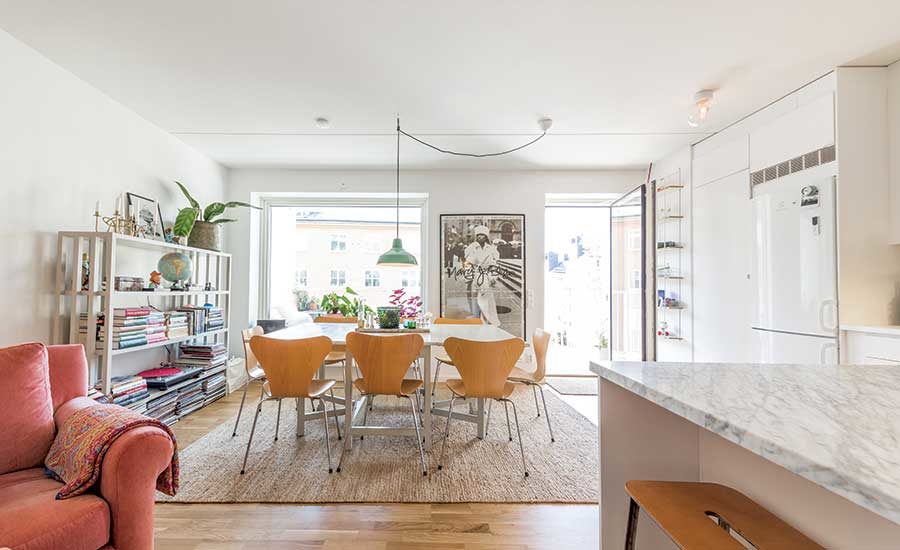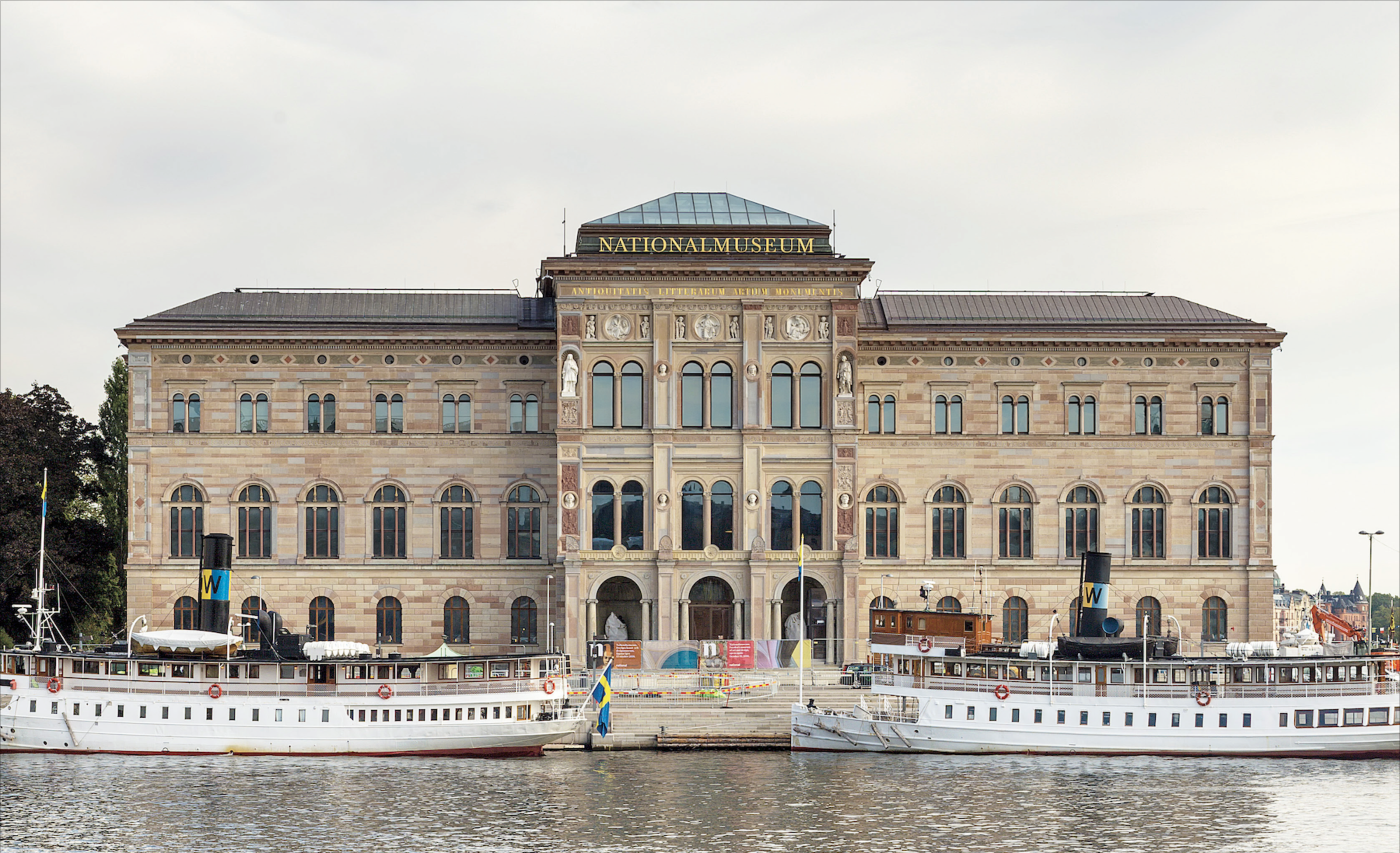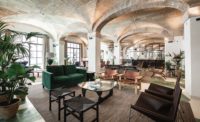"I’m well known to have no style, architecturally speaking, so I can adopt any style,” says Gert Wingårdh, founder of Swedish architecture firm Wingårdhs. It is not surprising then that the designer of many of Sweden’s most well-known examples of contemporary architecture—Aula Medica in Stockholm (2013), the Emporia shopping complex in Malmö (2012), and the Kuggen office building in Gothenburg (2011), to name a few—is also the mastermind behind Stockholm’s most recent “monument to functionalism,” as former Wingårdhs collaborator, architect Anna Söderberg, calls the Basaren apartment building.
Additional Content:
Jump to credits & specifications
The architects took a stylistic cue not only from a rational 1930s two-story commercial structure that was razed from the site, but also from the requirements of the client, Stockholms Kooperativa Bostadsförening (SKB). SKB, a housing cooperative founded in 1916, builds, rents to, and manages properties for its member-residents. Since this is the third project Wingårdhs has designed for SKB, the Gothenburg-based firm was well aware of the organization’s expectations when they won the competition for Basaren in 2006: quality, low-maintenance, democratic, community-focused design. The goal was not “a building that would stand out, but one that would fit in,” Wingårdh says.
The white brick-clad structure is adapted to its surroundings as if it couldn’t have been designed any other way. Yet the scheme is, in some measure, the outcome of a long battle with the city. “At some stage of the design, there were three staircases and elevator cores, all leading up to the same height,” Wingårdh explains. “The city thought the building was a bit too big and messy, so we dropped one of the staircases on the upper levels.” Following this simple gesture, the smaller floor plates resulted in two towers, with eight and 10 stories respectively, that were given the same heights as their neighboring buildings. Their corners were rounded, not only to allow light to travel continuously around the facade without creating hard shadows, but to create a direct dialogue with a curving building across the street.
In addition to its shape, reminiscent of the country’s 1930s functionalist forms, the building’s key decorative elements are the strong horizontal bands created by the balconies, and the brickwork details of the ventilation ducts above the entrance. And even though designing an International Style pastiche was not the goal, the architects did borrow some of those key principles and, in doing so, arrived at contemporary solutions that perfectly reconcile the building and environment with its inhabitants.
Completed in June, the Basaren housing complex sits on a privileged hilltop location, a corner plot between busy Hantverkargatan and a quiet backstreet in Stockholm’s central Kungsholmen borough. Its 44 units, ranging from 345-square-foot studios to 1,270-square-foot 4-bedroom dwellings, all enjoy a south-facing balcony and unified interiors: terrazzo floors in the entry hall and bathrooms, and oak parquet elsewhere; an open-plan kitchen and living room; and all-white finishes that, together with large windows, maximize daylight during the dark Swedish winters. The 74,300-square-foot building features an ample entry floor with multipurpose common rooms and bike storage, as well as commercial spaces, including an upscale restaurant, at street level.
The not-for-profit cooperative tenancy model presents an appealing alternative to the regular rental market, offering slightly more affordable, permanent contracts to their members, who pay a yearly fee in order to keep their place in the queue to rent an apartment. “On the edge of affordability,” as Wingårdh puts it, projects like Basaren do not address the lack of affordable housing for low-income populations, but they do offer a solution to other problems that are also part of the housing crisis hitting cities worldwide. Coop developments offer a variety of apartment typologies as they strive to accommodate different households; they are designed to foster community among residents; and, as the building’s permanent owners, the organizations ensure a high quality of construction, as well as continuous maintenance.
With Basaren, the building gives back to the city in beautifully composed architectural harmony, where form follows generosity. While centrally located within Stockholm, this model might just be the recipe for change that increasingly segregated areas of Sweden’s suburbs so desperately need. According to Wingårdh, “We think that building better properties in those areas is key, and it’s possible to do so on a very economically sound basis.”
CreditsArchitect: Wingårdh Arkitektkontor— Gert Wingårdh, principal; Anna Söderberg, project architect
Engineering: KE-gruppen (structural)
Consultants: ACAD-International (acoustics); Nyréns Arkitektkontor (landscape); Projektel (electrical, lighting); Creanova (heating)
General contractor: BTH Bygg
|
SpecificationsBrick Randers Tegel
Balcony railings FHT Konstruktion
Acoustical ceilings LEAB Undertak
Metal doors Daloc
Elevators ALT Hiss
Appliances Miele, Electrolux |















